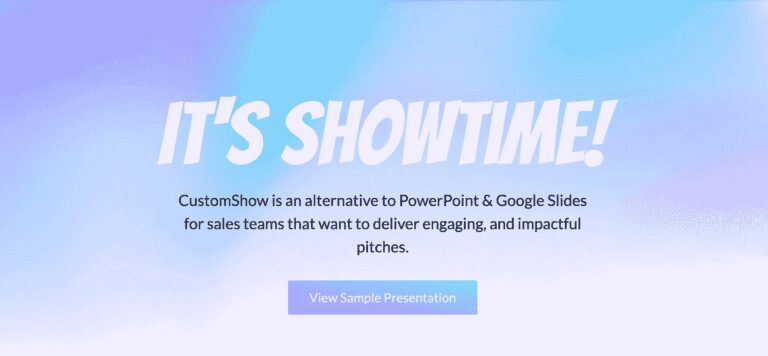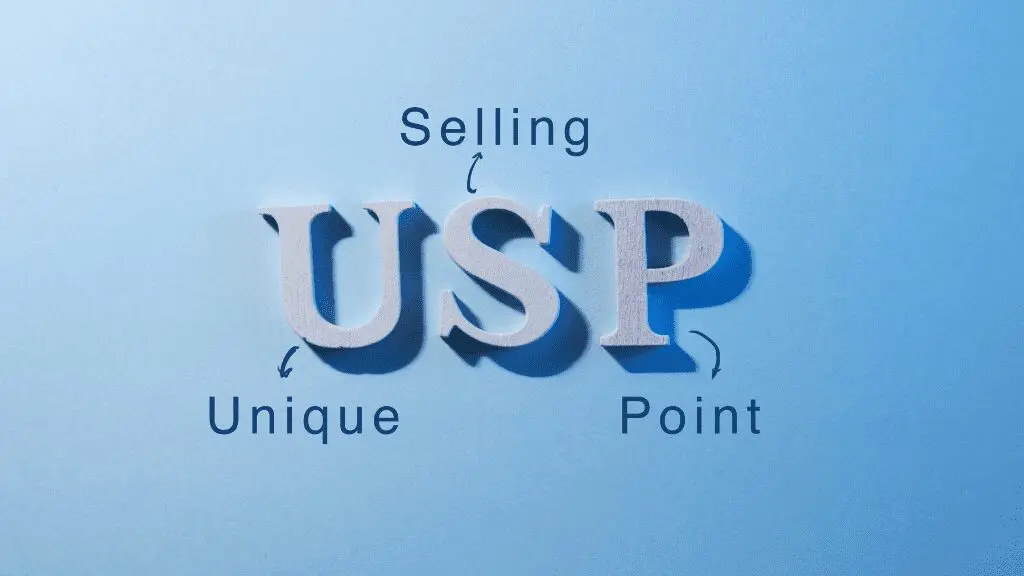Brand presentations are a key part of marketing, but they can be difficult to craft. Brand presentations are more than just PowerPoint slides with bullet points; they’re a narrative that tells your company’s story and creates an emotional connection with your audience.
Discover how to harness the power of storytelling, emotional resonance, and data-driven insights to create brand presentations that truly resonate.
In this article, we’ll discuss how to create a compelling brand presentation and present it in an engaging way.

Reasons for Reluctance to Deliver Brand Presentations
Delivering a brand presentation can evoke various feelings of reluctance, often rooted in concerns and uncertainties. Some common reasons for this reluctance include:
- Lack of design skills hindering the creation of visually appealing slides.
- Concerns about the cost and time required for development.
- Fear of not meeting audience expectations in terms of content and aesthetics.
- Technical difficulties and challenges in managing multimedia elements.
3 Consequences of Not Using Brand Presentations:
- Reduced audience engagement due to lack of visual aids
- Diminished brand recognition without consistent visual elements
- Lost competitive edge compared to companies leveraging visual storytelling techniques
How CustomShow Can Help Creating and Delivering Brand Presentations

CustomShow presents a suite of powerful tools designed to revolutionize the creation and delivery of brand presentations, fundamentally reshaping the way businesses connect with their audience. Here’s how CustomShow can elevate your presentation game:
Effortless Creation:
CustomShow’s intuitive drag-and-drop interface enables seamless integration of diverse rich-media elements (from SVG and images to videos and animations). With no size limitations, allowing presentations to reflect your brand’s essence.
Seamless Collaboration and Sharing:
CustomShow’s cloud-based platform facilitates real-time collaboration and easy sharing, fostering effective communication and engagement.
Professional Templates at Your Fingertips:
CustomShow offers professionally designed templates, empowering users without specialized skills to create captivating brand presentations.
Explore Our Sample Presentation for Inspiration:
Be sure to explore our sample presentation that not only serves as inspiration but also showcases the potential of CustomShow in inspiring and engaging your audience effectively. With CustomShow, the art of brand presentation becomes a truly transformative experience.
Steps for Crafting Brand Presentations
Understanding the Brand
Before embarking on the journey of crafting a compelling brand presentation, it’s essential to have a deep understanding of the brand itself. This foundational knowledge forms the basis upon which you will build your narrative. Here’s how to go about it:
Defining Core Values, Mission, and Vision:
Begin by defining the brand’s core values, which are the fundamental principles that guide its actions and decisions. These values reflect what the brand stands for and the beliefs it upholds. Additionally, articulate the brand’s mission – the purpose it serves and the problems it aims to solve. Finally, outline the brand’s vision, painting a vivid picture of the future it envisions. Also, work with branding agencies to ensure consistency and effectiveness in communicating these elements to the target audience.
Identifying the Target Audience:
Your brand presentation should resonate with the intended audience. Identify who your target audience is – their demographics, preferences, pain points, and aspirations. This understanding will help tailor your narrative in a way that speaks directly to your audience’s needs and desires.
Highlighting Unique Selling Points (USPs) and Competitive Advantages:

What sets your brand apart from the competition? Identify your unique selling points – the aspects that make your brand exceptional and different from others. This could be your innovative products, excellent customer service, or a particular approach to solving problems. Incorporate these USPs into your narrative to showcase what makes your brand stand out.
Structuring the Narrative
Crafting a compelling narrative for your brand presentation requires careful structuring to ensure a seamless and engaging flow. A well-structured narrative captivates your audience, guiding them through your brand’s journey and key messages. Here’s how to effectively structure your brand presentation narrative:
Introduce the Concept of Storytelling:
Begin by introducing the concept of storytelling as the backbone of your presentation. Explain that you will be guiding your audience through a narrative that highlights your brand’s essence and journey. This sets the stage for an engaging and relatable presentation.
Establish a Clear Beginning, Middle, and End:
A classic storytelling structure involves a clear beginning, middle, and end. In the beginning, introduce your brand, its history, and the problem it aims to solve. The middle section delves deeper into the brand’s journey, evolution, and how it addresses the identified problem. Finally, the end wraps up the narrative by showcasing the impact your brand has made and inviting the audience to take action.
Incorporate the Brand’s Journey:
Trace the evolution of your brand – from its inception to its current state. Highlight milestones, challenges, and breakthroughs that have shaped the brand’s identity. This narrative arc not only engages the audience but also establishes authenticity and relatability.
Creating Emotional Connection
When you’re crafting a presentation, it’s important to consider how your audience will react to what you’re saying. If they don’t feel connected or engaged with the content, then it’s unlikely that your message will resonate with them.
To create an emotional connection with your audience and help them understand what makes you unique as a brand, consider using real-life stories or testimonials from customers who have been positively impacted by your product or service. These types of testimonies are powerful because they allow people in the audience to see themselves in those situations–and thus feel empathy toward those individuals. You can also showcase relatable scenarios (e.g., “I was stuck at home today because my car wouldn’t start”) to establish human connections between yourself and members of the audience who may be facing similar struggles.”
Showcasing Visual Identity
The visual identity of your brand is an important part of the story you’re telling. It’s what sets your company apart and gives it personality, so it’s crucial that you showcase this element in every way possible. Here are some ways to integrate visual elements into your presentation:
- Showcasing the logo, color palette, typography and imagery
Your brand logo is one of the most recognizable aspects of your business–it should be front and center during any presentation! Make sure that it is visible throughout each slide (including title slides) so that viewers can easily identify which company they’re learning about. A memorable design is crucial for your company. You can now Create logos using AI to reflect your brand identity perfectly. You should also include other visual cues like color palettes or typefaces used throughout all marketing campaigns and marketing materials as well as specific images associated with various products or services offered by the company.”
Delivering a Call to Action
The call to action is the final step of your presentation, and it’s what you want your audience to do after you’ve finished speaking. There are two main types:
It’s important that you align these CTA’s with your brand goals and objectives. For example, if one of your objectives is increasing product awareness, then an appropriate CTA might be “visit our website mockup” or “sign up for our newsletter. If another objective was improving customer satisfaction ratings by providing better service through online chat options during business hours (when customers are most likely looking for help), then a good CTA could be something like “click here if you need assistance with anything else today.”
Leveraging Data and Facts

While storytelling and emotional appeal are essential components of a compelling brand presentation, the integration of data and facts adds credibility and depth to your narrative. Incorporating relevant statistics, case studies, and industry insights can strengthen your brand’s message and resonate with a rational audience. Here’s how to effectively leverage data and facts in your presentation:
Incorporate Supporting Statistics:
Integrate data-driven insights that align with your brand’s story. Whether it’s showcasing market growth, customer satisfaction rates, or industry trends, statistics add a layer of authority to your narrative. Ensure that the statistics are current, accurate, and directly relevant to the points you’re making.
Present Factual Evidence:
Back your brand’s claims with concrete evidence. If you’re highlighting a product’s benefits, for example, share real-world examples of how it has positively impacted customers. Including case studies or success stories illustrates the practical application of your brand’s offerings.
Balance Emotional Appeal with Rational Evidence:
While emotions are powerful, combining them with rational evidence creates a holistic and convincing narrative. The emotional resonance draws your audience in, while data and facts provide the logical support that reinforces your brand’s credibility. To gather the most relevant data, leverage user agents for web scraping, ensuring that your evidence is both accurate and up-to-date.
Crafting Compelling Visuals
To ensure that your visual aids are as compelling as possible, it’s important to first establish a narrative for your presentation. This can be done by writing out a story and then using multimedia elements to enhance engagement.
Once you have established an overarching story, incorporate slides, images and videos into the mix in order to bring even more life to your presentation. If possible use infographics or other data visualizations as well to help tell the story visually. You may want to consider adding some additional elements such as music or voiceover narration that will further enhance the overall experience for attendees who watch it later on their own time (if applicable).
Practicing Effective Delivery
The next step is to practice your delivery. It’s important to be prepared for the presentation, but it’s also crucial that you have practiced your delivery so that it flows naturally and effectively conveys the message of your brand story.
If possible, practice in front of a mirror or ask someone who knows nothing about your company or product (but understands business) not only what they think about what they see but also how they’d describe the presentation overall. This can help identify areas where adjustments need to be made and allow you to work on them before presenting in front of real stakeholders.
Next Steps
We trust that you now possess a clearer comprehension of what a brand presentation entails, along with its advantages. Discover how CustomShow can significantly enhance your sales scenarios.

